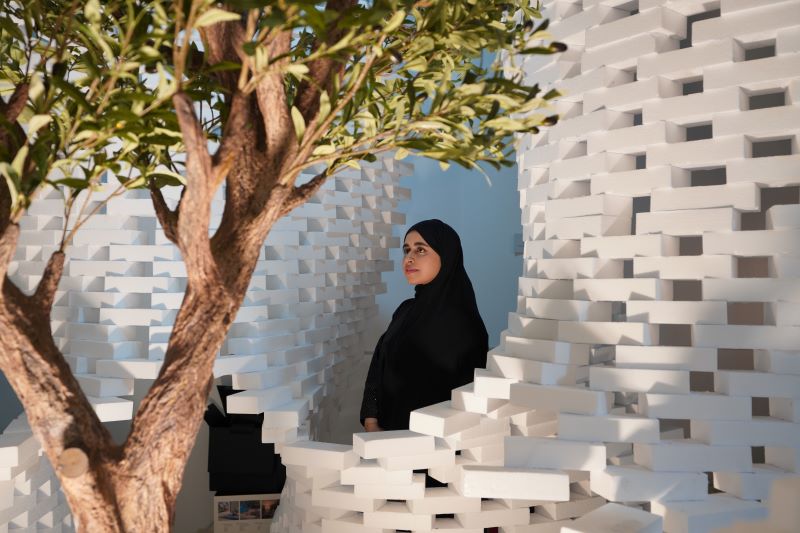Immersive Technologies Part Of Teaching Aids In Engineering Classrooms
Augmented Reality (AR), Virtual Reality (VR) and Mixed Reality (MR) technologies have become part of new innovative teaching aids in architectural engineering classrooms at the University of Sharjah in the United Arab Emirates.
These technologies help simulate real industry work because “many international studios, engineers, and designers are working with the same methodology in the market," said Dr. Aref Mohamed Maksoud.
Apart from incorporating AR, VR, and MR in his teaching methods, Dr. Maksoud also trains his students to use 3d printers, laser cutting technology, and Computerized Numerical Control (CNC) software to produce real-scale projects for their assignments, such as installations and small scale pavilions.
Dr. Maksoud's efforts in training students on how to make best of these new technologies is paying off.
The designs the students create have made their way to competitions and exhibitions, such as the Dubai Design Week, the Middle East's largest creative festival.
For Dubai Design Week 2021, Dr. Maksoud's students created 3d printed concrete benches for the exhibition, which are now incorporated in the outdoor landscape of the university premises.
For 2022's exhibition, over 50 students in the Parametric Design course installed 'ParaBrick,'a real-scale foam wall installation, to explore the different ways to generate brick wall designs.

Students used the parametric design method, where features are shaped according to algorithmic processes, as compared to being designed directly.
The students have demonstrated “the impact of the digital era on architecture, design, and art, as well as reflect the UAE's culture, humanity, technology, and design through the eyes of the future," according to Dubai Design Week.
“Architects and architecture students who are familiar with immersive technologies will be better prepared for their future in the architecture profession, where the use of these technologies is becoming more common," Dr. Maksoud explained.
Dr. Maksoud noted that the technologies slash construction costs, save time, and reduce the need for site visits, as they identify and solve problems before they occur in the real world.
Immersive technologies, according to Dr. Maksoud, can help students better understand and experience the spatial qualities of a design, such as a scale, proportion, and light, which leads to more accurate and effective designs.

